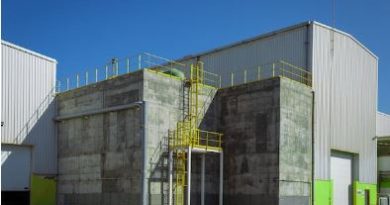How Was Decaf Coffee Created?
Drinking coffee is a beloved pastime for many people around the world. It is a comforting ritual that can help people start their day, power through a midday slump, or enjoy a warm beverage with friends. However, for some people, the caffeine content in coffee can be too much to handle. This is where decaf coffee comes in as a great alternative.
When most of the caffeine in coffee is removed, decaf or decaffeinated coffee becomes a good option for those who are sensitive to caffeine or want to reduce their caffeine intake. But have you ever wondered how decaf coffee was created? Read on below and join us as we delve into the history and science behind decaf coffee.
Contents
The Origins of Decaf Coffee
The origins of decaf coffee can be traced back to the early 1900s. It is believed that the first decaffeinated coffee was created by a German coffee merchant named Ludwig Roselius. According to legend, Roselius accidentally discovered the decaffeination process when a shipment of coffee beans was soaked in seawater during transport. When the beans arrived, Roselius found that they had lost their caffeine content but retained their flavor.
After this accidental discovery, Roselius set out to create a method to decaffeinate coffee intentionally. In 1903, he patented the first commercial decaffeination process, which involved using a solvent to extract caffeine from the beans. This process was later improved upon by other scientists and companies, leading to the creation of various decaffeination methods.
The Science Behind Decaf Coffee
Decaf coffee is created by removing most of the caffeine from coffee beans. Caffeine is a natural stimulant found in coffee that gives it its characteristic energizing effects. However, caffeine can also cause negative side effects such as jitters, anxiety, and insomnia, which is why some people choose to drink decaf coffee instead.
If you’re looking for a good cup of decaf, Lavazza has you covered. Known for being one of the biggest coffee producers, Lavazza also has a decaf option for those wanting an alternative. You can check out this Lavazza Dek review and see for yourself why Dek is one of the best decaf blends out there.
With that said, there are several methods used to remove caffeine from coffee beans, but most involve using a solvent to extract the caffeine. The most common decaffeination methods include:
-
The Swiss Water Process
This method involves soaking the coffee beans in hot water to extract the caffeine, then using a special filter to remove the caffeine from the water. The water is then used again to remove more caffeine from a new batch of coffee beans.
-
The Direct Solvent Process
This method involves soaking the coffee beans in a chemical solvent that binds with the caffeine molecules, allowing them to be removed from the beans. The beans are then washed to remove any remaining solvent.
-
The Indirect Solvent Process
This method is similar to the direct solvent process but involves using a solvent that is not directly in contact with the beans. Instead, the beans are steamed to open their pores, and the solvent is used to extract the caffeine from the steam.
-
The Carbon Dioxide Process
This method involves pressurizing carbon dioxide to create a liquid form, which is then used to extract the caffeine from the coffee beans. The caffeine-free carbon dioxide is then released back into the atmosphere.
Conclusion
Decaf coffee has come a long way since its accidental discovery in the early 1900s. Today, there are several methods used to create decaf coffee, each with its own advantages and disadvantages. Whether you prefer the Swiss Water Process or the Direct Solvent Process, decaf coffee is a great alternative for those who want to enjoy the taste and experience of coffee without the caffeine.





That’s amazing! This is one of the most interesting topics! Thank you for sharing this information with me.
This is really interesting and very informative post, I enjoy reading this thanks for sharing this with us
That is so good to know about decaf coffee. I didn’t realize it was an accidental discovery!
I love coffee so much! I can’t live without! I am glad to know more about its history!
Oh, this is interesting! I am a coffee lover so it’s good to know these facts.
What an interesting process and accidental path to discovery, and now I know how decaf coffee came about!
This sounds like an interesting process that was stumbled upon. I don’t drink decaf coffee. I need all the caffeine I can get. Haha
Great info, but of course, I’d still prefer my coffee with caffeine. 🙂
I found the article on the history of decaf coffee really interesting! It’s always nice to learn something new about the origins of the products we consume every day.
loved this story behind decaf coffee! i recently wrote about coffee itself and its connections to a saint in India from centuries ago… 🙂
This is cool to learn about decaf coffee. I do like my daily coffee.
This is all really interesting. I never even knew about this. That’s really neat to hear about it being a complete accident. How cool!!
I had no idea how this was done. It’s interesting to read about it.
That is so cool to know decaf coffee was made by accident lol, such a fun fact!!